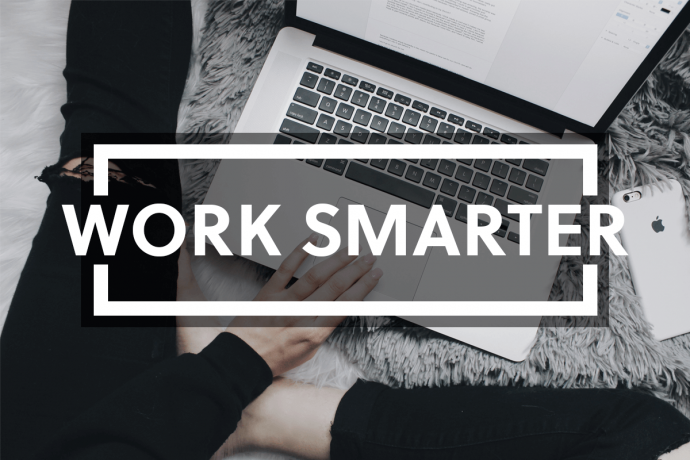 0115 786 0420
0115 786 0420
 0115 786 0420
0115 786 0420

When it comes to web design there are two main attributes which will take you from being an average run-of-the-mill web designer to a highly valued and sought-after web guru, and they are the speed and the quality of your work.
To stay on top of today’s fast-moving and ever-changing world you need to learn how to increase your efficiency and speed up your workflow, whilst continuing to produce great quality work. This won’t just benefit your clients, it will also benefit yourself, particularly if you’re a freelance web designer. Think of it this way, if you get paid to design a basic five page website which takes a week, that’s great. But if you can reduce that time by up to 50%, you can potentially design two websites within that same one week period, meaning you get paid twice! Now it’s important to reiterate that the quality of your work is your top priority and it should never be sacrificed! However, there are a few tips and tricks you can use to help speed things up.
Firstly, being a faster web designer doesn’t mean you have to rush your work, it’s about working smarter and optimising your workflow to create the same great output but at a more efficient rate. A great web designer understands the quality of their work is and always will be their the top priority but also values the importance of efficiency.
Almost every web designer and developer has been guilty of procrastinating at some point in their lives, and we all tend to fall for the same distractions, whether they be constant emails about other projects, team meetings & catch ups or social media notifications. Becoming a more efficient web designer means learning how to protect your time against these distractions, and if that means turning off your phone and disabling your notifications, then so be it.
Pro Tip: Creating a dedicated workstation can help eliminate distractions, whether you’re working from home, in your office or in a co-working environment. Make it clear to the people around you that this is your space and you’re in work mode.
As well as protecting your time from distractions, it’s also important to make the best use of it. Schedule one morning at the beginning of each week to map out what you want to accomplish and allocate times to each task. You can always reevaluate and adjust your plan mid-week depending on if you’re ahead and behind schedule.
Pro Tip: Try to plan out your days based around your own productivity. If you’re better at creative tasks in the morning and analytical task after lunch make sure your schedule reflects this to ensure you’re making the best use of your time.
Talk to any professional web designer and they’ll tell you, not every great design idea is born the moment a project is pitched, they take time to formulate and develop. To help this process along, it’s a good idea to surround yourself with inspiration so your ideas may sprout. Once you have some initial ideas it’s important to sketch these out on paper first. Sketching ideas out before jumping into Photoshop can save you hours of work.
Pro Tip: Inspiration doesn’t just come from other websites, if you want to create truly innovative ideas you have to jump out of your comfort zone and explore new avenues and material.
One of the most common causes for a delayed project is an ambiguous project brief and poor planning. To avoid this, a good rule of thumb is to never walk out of a meeting without having a clear idea (in writing) of what’s required and when for. A good project brief should consist of realistic milestones along with adequate contingency time, and if the client requests changes and alterations mid-project the brief should be adjusted to reflect this.
Pro Tip: When writing a project brief it’s important to remember to include sufficient time for research and planning. A designer can’t be expected to design without allowing them suitable time to get some perspective on the project and to brainstorm ideas.
Although these 3 simple tips may seem obvious in hindsight, they are crucial if you want to up your game and start working more efficiently.
If you’d like any further tips or advice regarding web design, or if you have a new project you’d like help with, please don’t hesitate to contact us today!